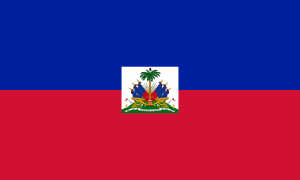Language/Haitian/Grammar/Gender-of-Nouns
As a Haitian language teacher with over 20 years of experience, I can confidently say that one of the trickiest aspects of Haitian grammar for beginners is mastering the gender of nouns. In order to use articles correctly and form meaningful sentences, it is essential to understand whether a noun is masculine or feminine. In this lesson, you will learn how to determine the gender of nouns in Haitian and use the corresponding articles.
Once you've mastered this lesson, take a look at these related pages: Word Order in Simple Sentences & Questions.
What are Nouns?
Before we dive into the gender of nouns, let's review what a noun is. Nouns are words that represent people, places, things, or ideas. In Haitian, they can be singular or plural.
Examples of singular nouns:
- Moun (person)
- Kay (house)
- Latibonit (city)
- Libète (freedom)
Examples of plural nouns:
- Moun yo (people)
- Kay yo (houses)
- Vil yo (cities)
- Dwa yo (rights)
The Gender of Nouns
Unlike English, Haitian nouns have grammatical gender and are either masculine or feminine. There is no hard and fast rule to determine which gender a particular noun belongs to, so it's important to learn them on a case-by-case basis.
However, here are some general guidelines to help you guess the gender of a noun:
- If a noun ends in "-té" or "-sion," it is usually feminine.
- If a noun ends in a consonant, it is usually masculine.
- If a noun ends in "-eur" or "-iste," it can be either masculine or feminine, depending on the context.
Here are some examples:
| Haitian | Pronunciation | English |
|---|---|---|
| Gason | ga-son | Boy |
| Fanm | fahm | Girl, Woman |
| Bagay | ba-gahy | Thing |
| Pòt | poht | Door |
| Tablo | tah-bloh | Table |
| Konstitisyon | kon-stih-ti-syon | Constitution |
| Leksyon | lek-syon | Lesson |
As you can see from the table above, there is no clear pattern for determining the gender of nouns in Haitian. It is important to memorize the gender of a noun along with its meaning.
The Articles
Once you determine whether a noun is masculine or feminine, you need to use the corresponding article. In Haitian, there are four articles: the definite articles "the" and "a," and the indefinite articles "un" and "une." The definite articles are "la" for feminine nouns and "a" for masculine nouns. The indefinite articles are "yon" for masculine nouns and "yonn" for feminine nouns.
Here are some examples:
| Haitian | Pronunciation | English |
|---|---|---|
| Gason anpil | ga-son ahn-peel | Many boys |
| Fanm sa a | fahm sah ah | This woman |
| Kay la | kay lah | The house |
| Pòt a | poht ah | The door |
| Tablo anmè | tah-bloh ahn-meh | Small table |
| Konstitisyon anplwaye | kon-stih-ti-syon ahn-plwah-yeh | Employee's constitution |
| Yon gason | yon ga-son | A boy |
| Yonn kout kay | yohn koo kay | Small house |
It is important to note that indefinite articles are not used as frequently in Haitian as they are in English. In many cases, a noun without an article is understood to be indefinite. This can be a tricky concept for English speakers to grasp, but it becomes easier with practice.
Conclusion
The gender of nouns and their corresponding articles is a complex aspect of Haitian grammar, but it is essential to master in order to form correct sentences. Remember that there is no clear pattern for determining the gender of a noun, so it's important to memorize them on a case-by-case basis. Additionally, don't forget to use the correct article based on the gender of the noun. Practice using nouns and articles in your own sentences to become more comfortable with this aspect of Haitian grammar.
Great work on completing this lesson! Take a moment to investigate these connected pages: Agreement of Adjectives & How to Use Be.
Other Lessons
- Questions
- Definite and Indefinite Articles
- Negative Sentences
- Interrogative Form of Verbs
- Agreement of Adjectives
- 0 to A1 Course
- Progressive Tense Ongoing Actions
- How to Use Be
- Plural of Nouns
Sources

